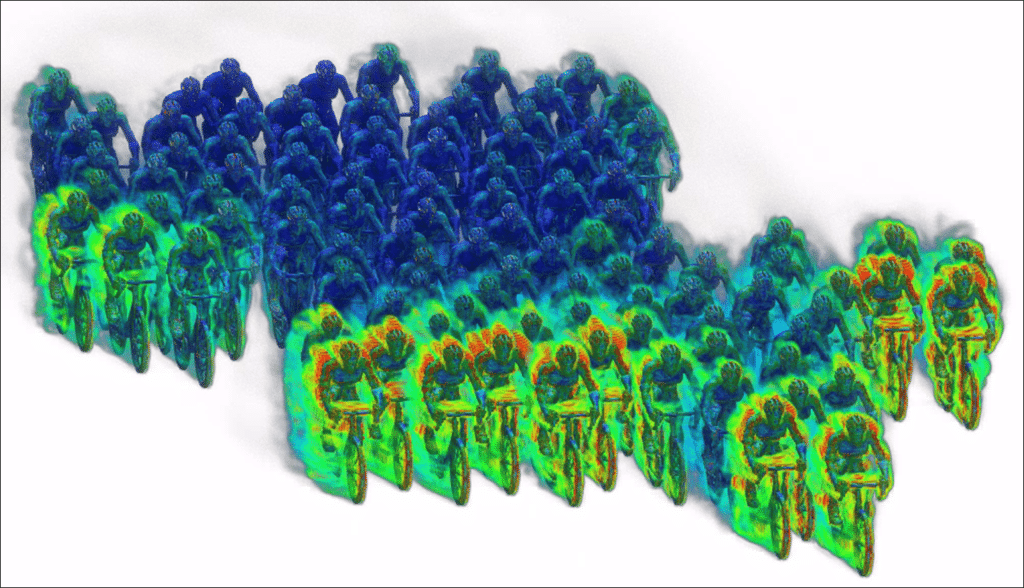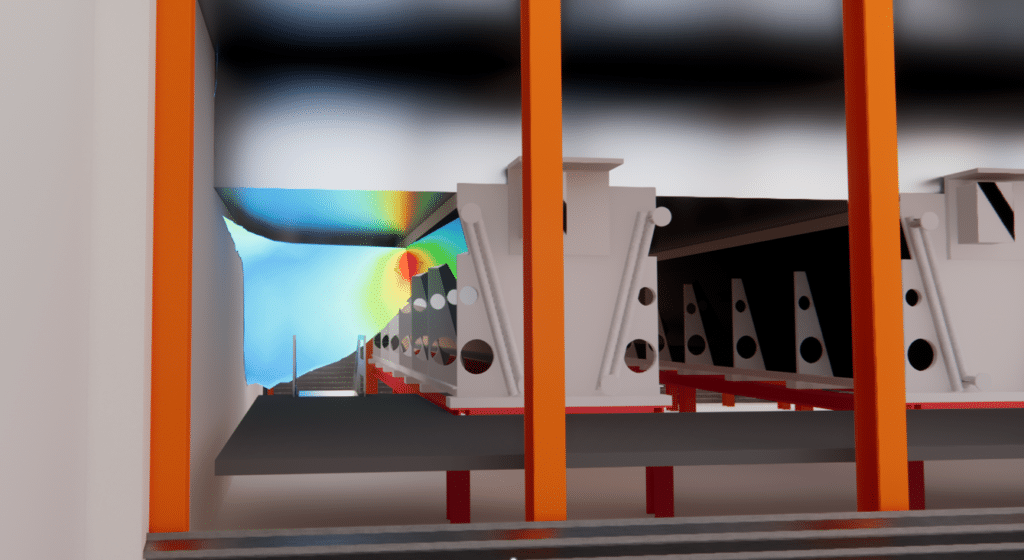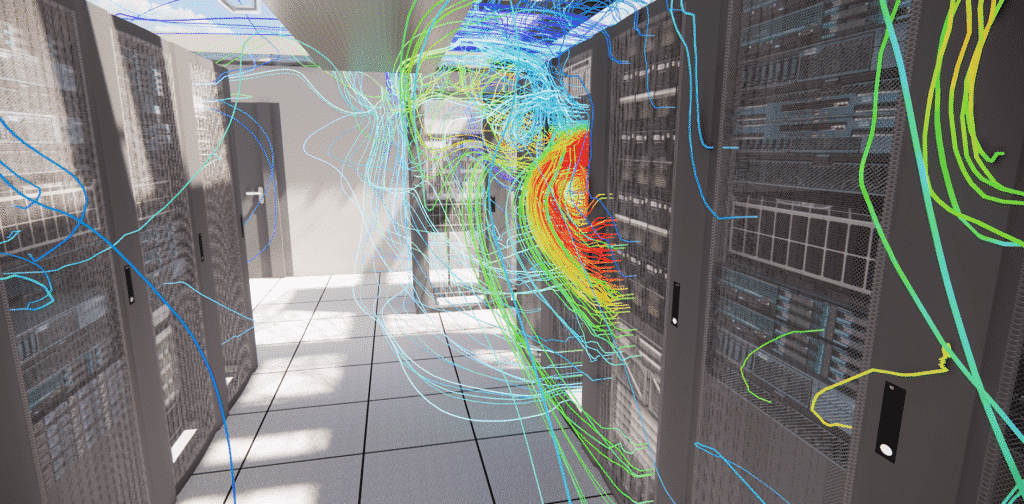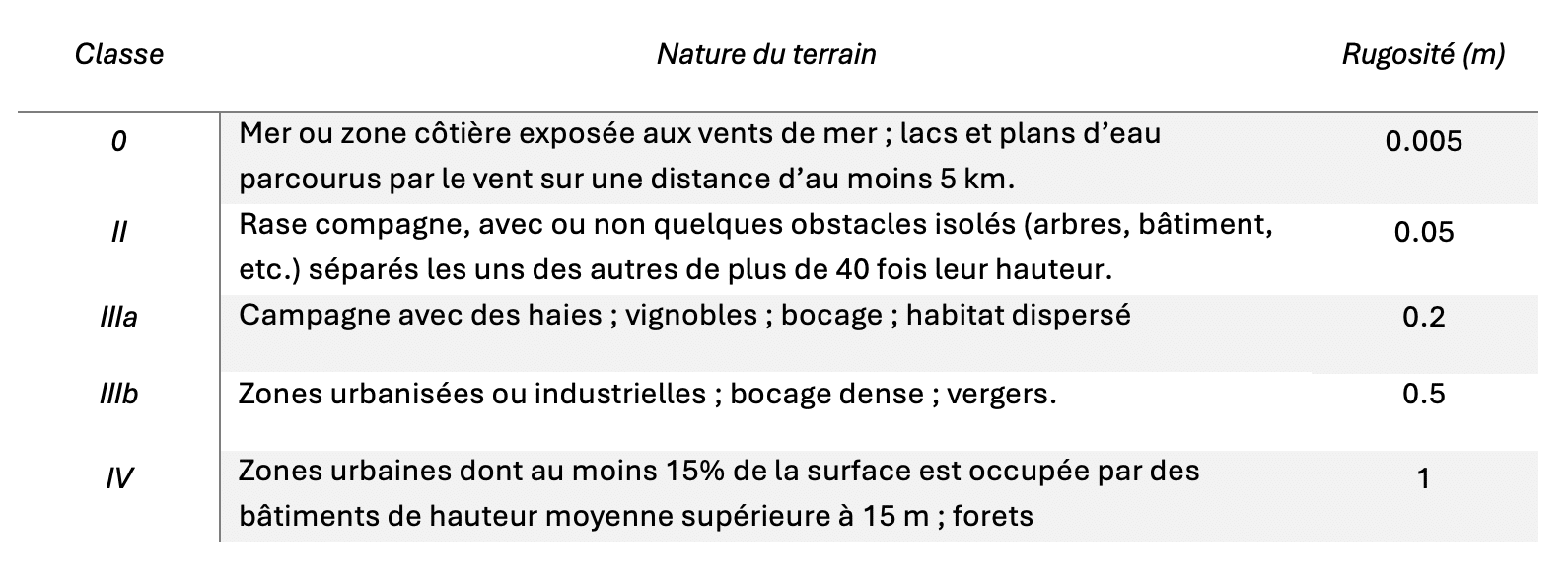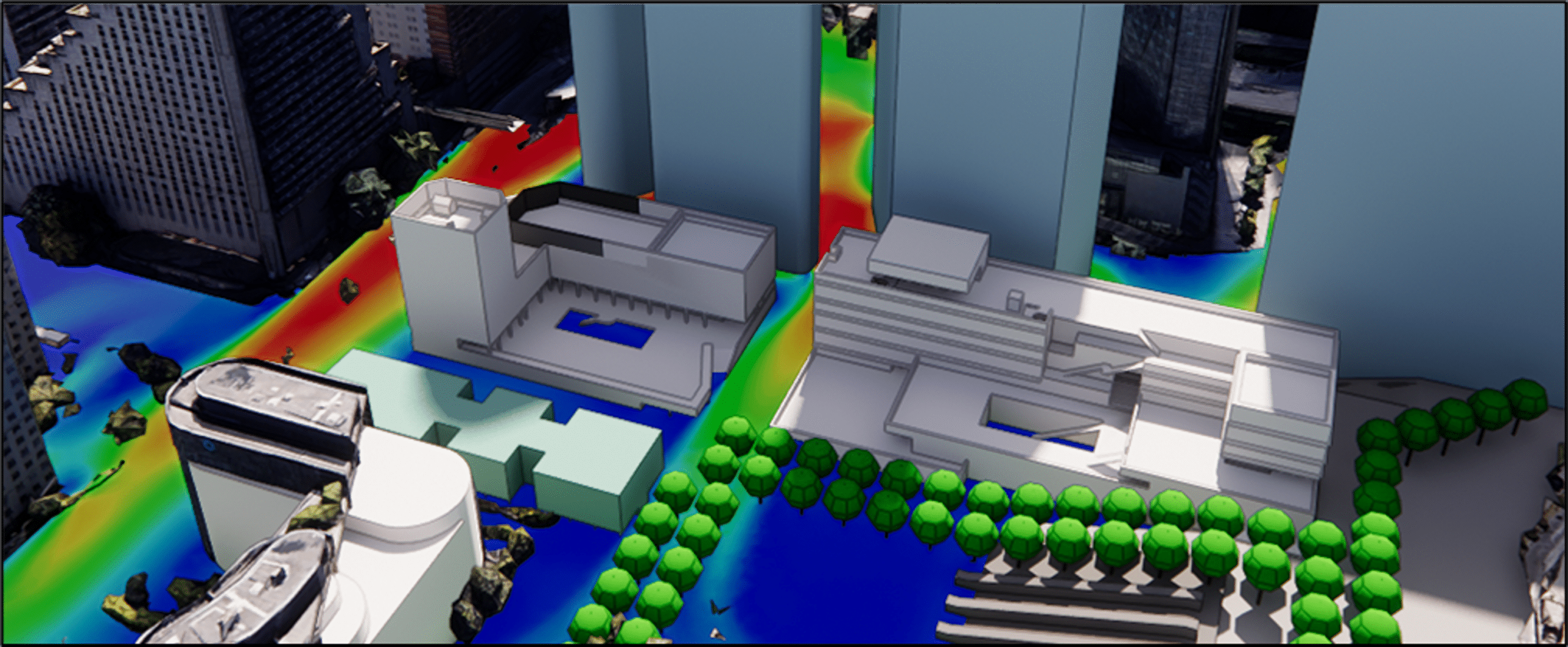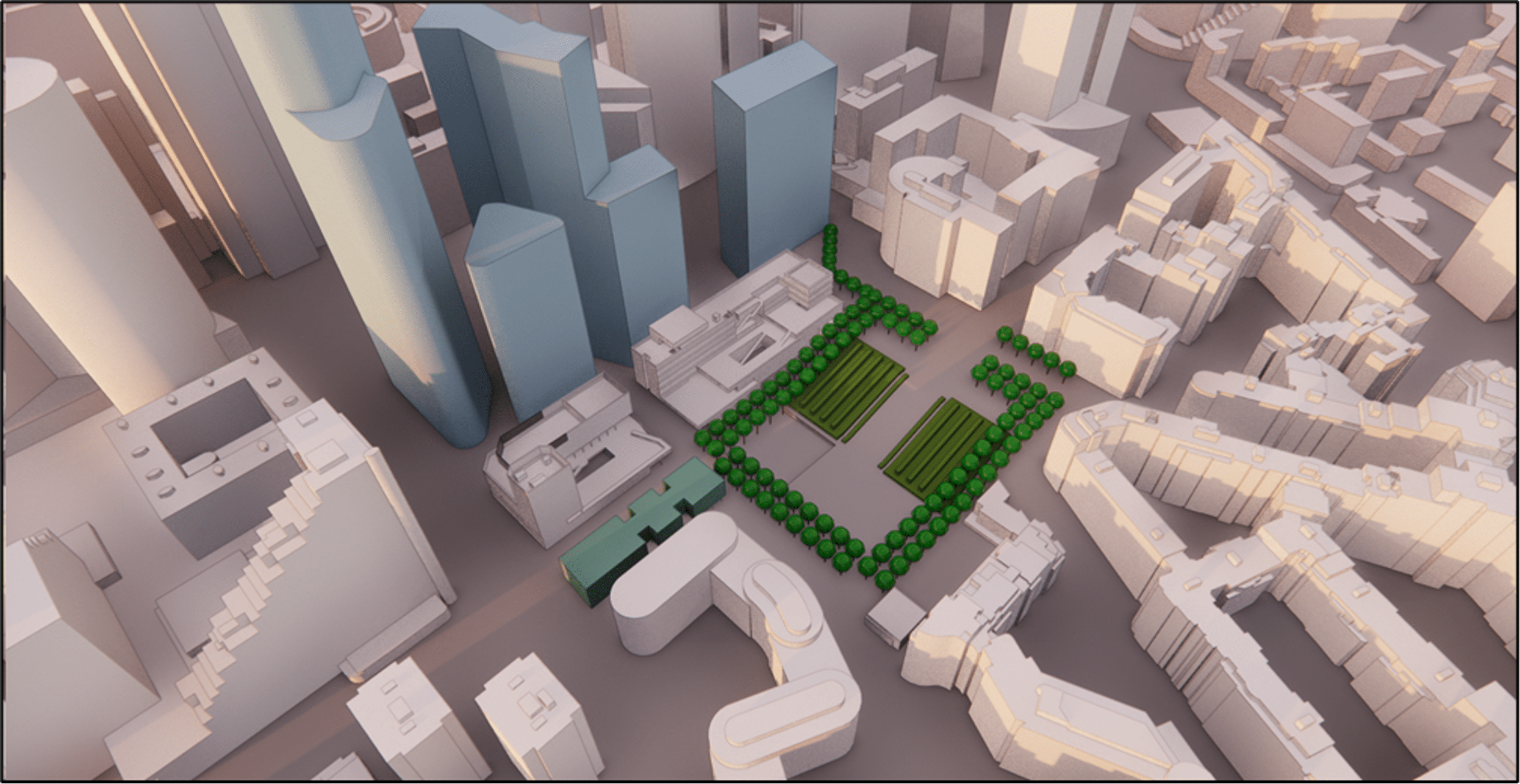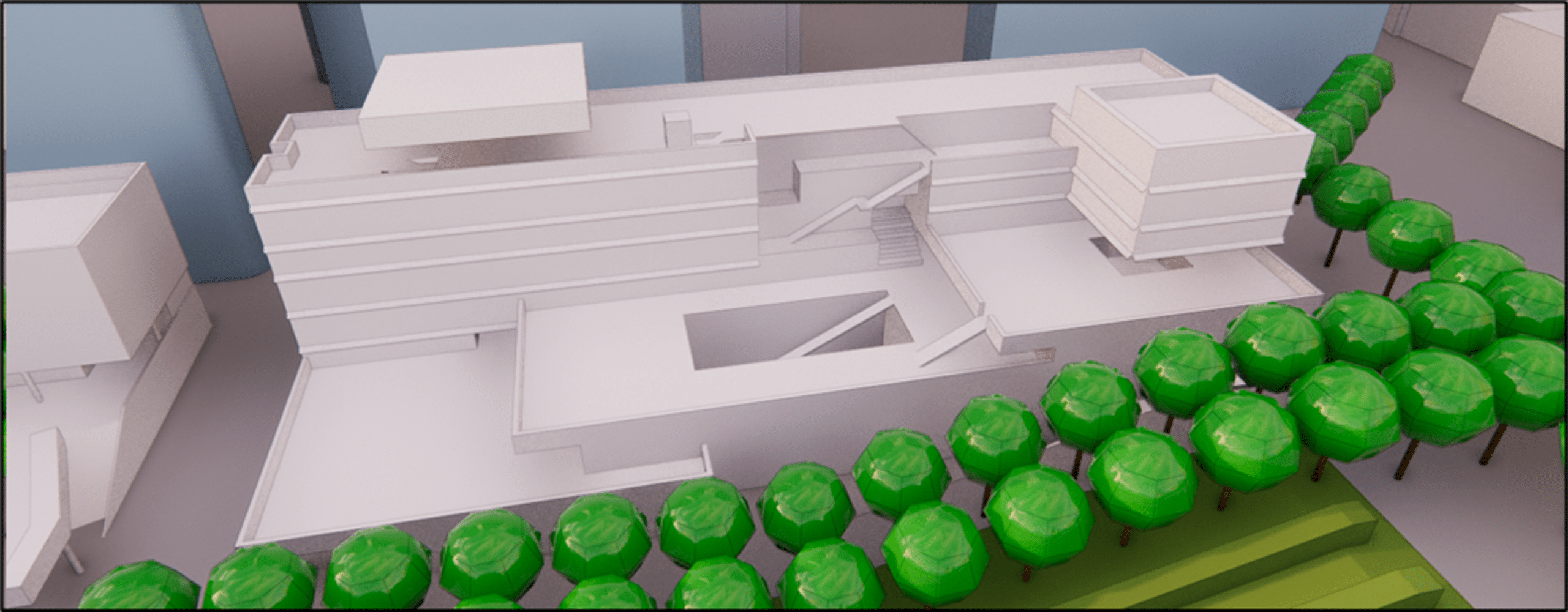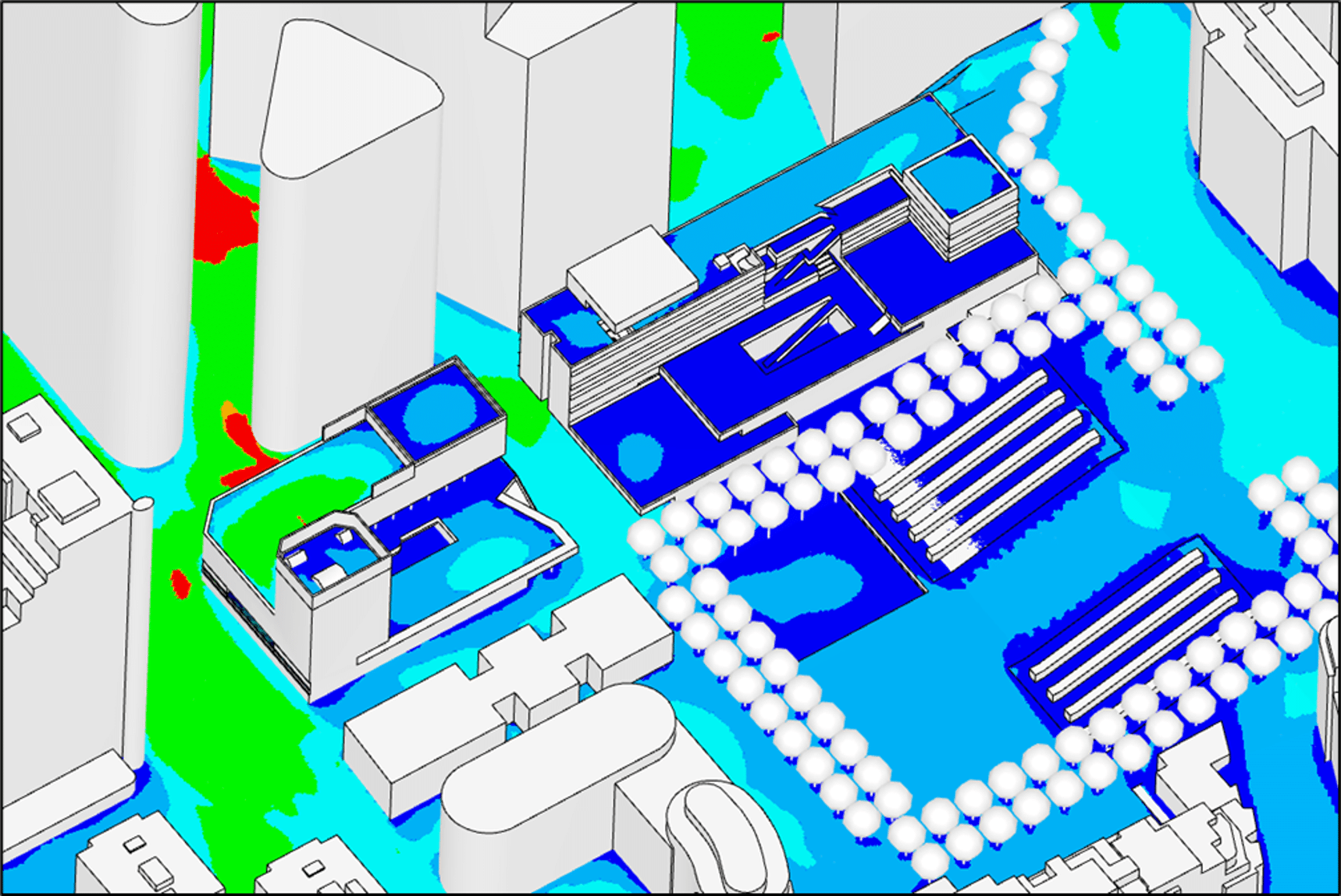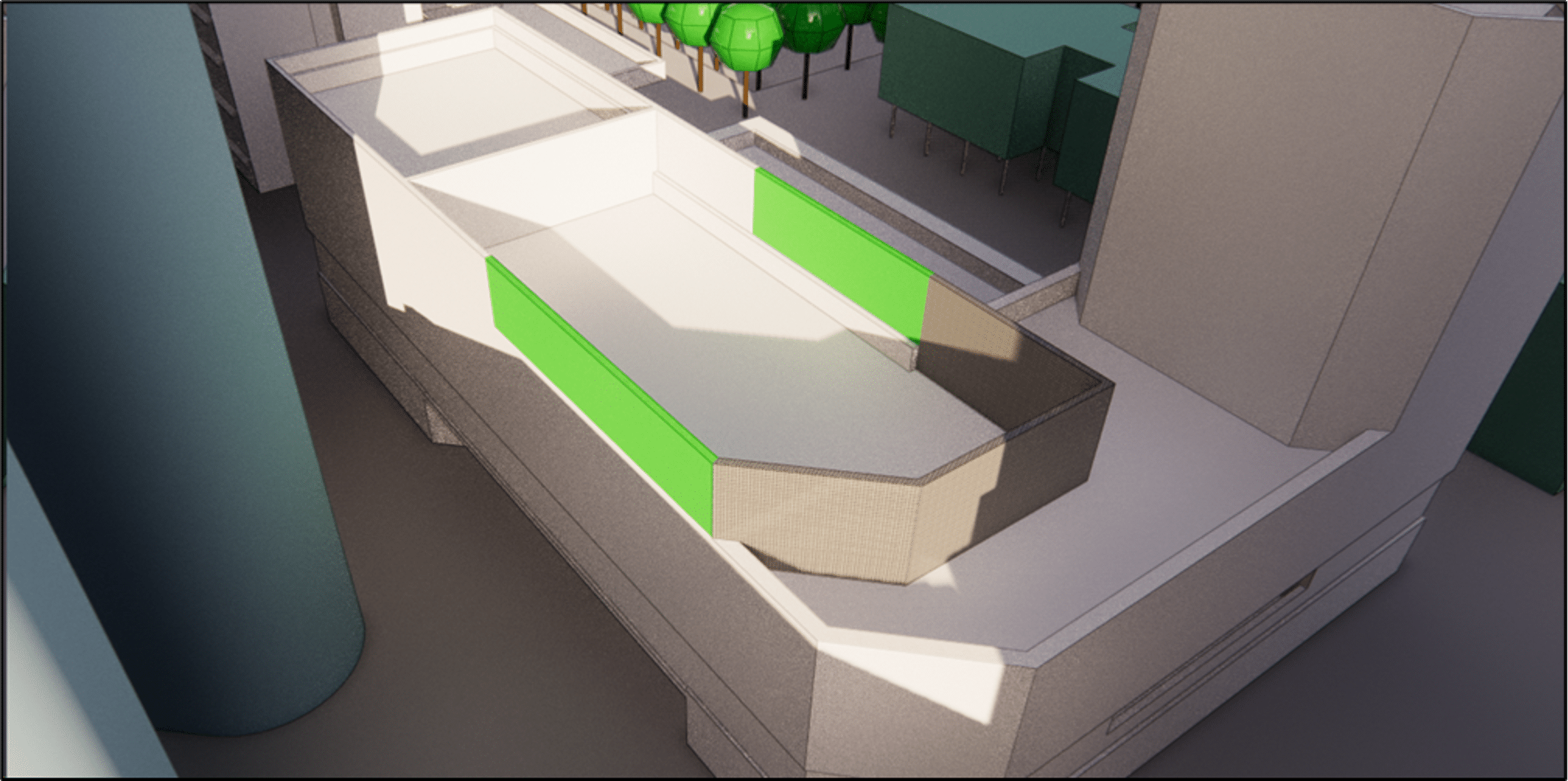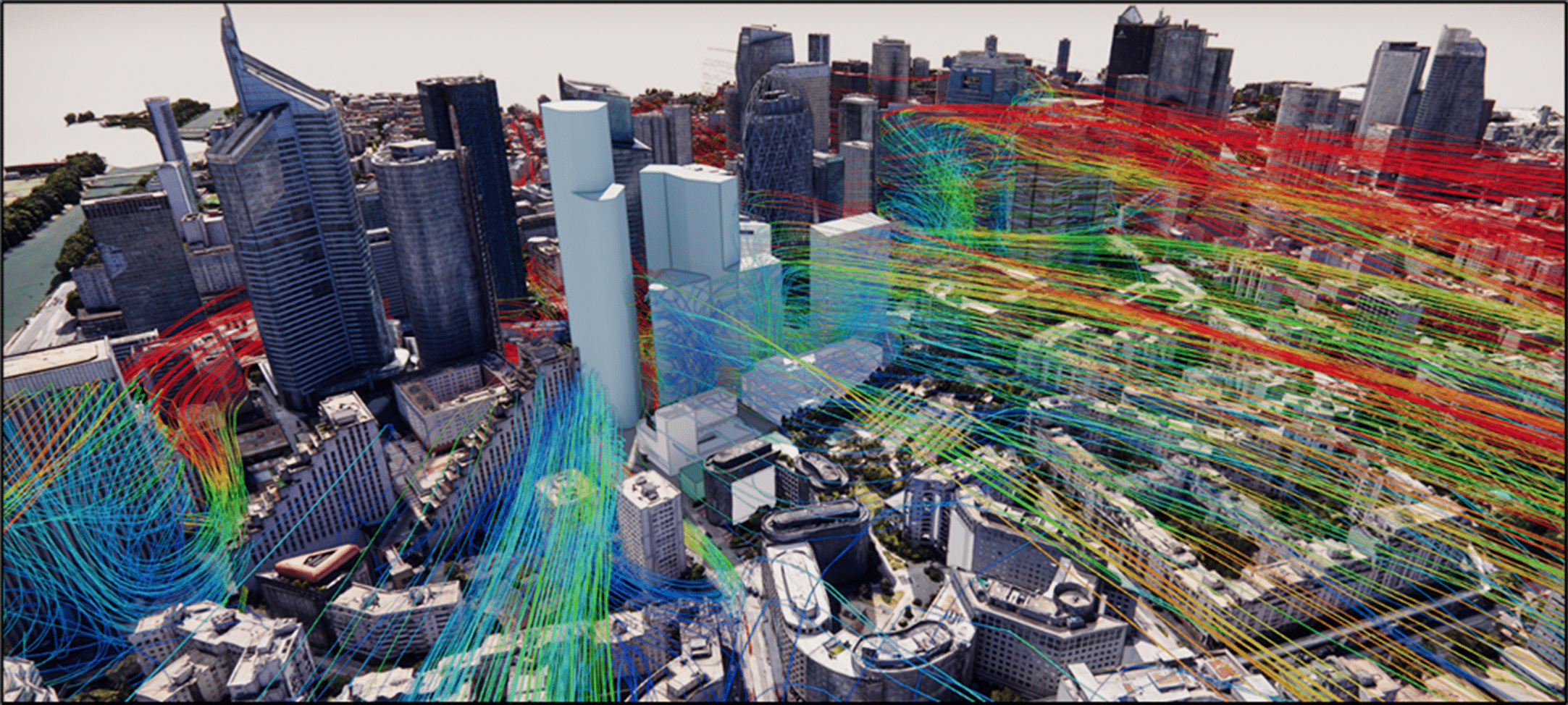Home » Air & Wind » Numerical simulation of pedestrian comfort in an urban environment » Pedestrian comfort study – La Défense
Pedestrian comfort study – La Défense
Study of aeraulic comfort at La Défense
Eolios Ingénierie recently carried out a study on the wind comfort of a school in the La Défense district of Courbevoie. This project was carried out as part of the construction of a middle school and a European school in a densely populated urban area.
The study area, which lies in the Hauts-de-Seine department, features a number of aeraulic obstacles, such as high-rise buildings. It was therefore essential to take these elements into account in the aeraulic study in order to understand their impact on occupant comfort.
Pedestrian comfort study for the Courbevoie European School project
Year
2024
Customer
NC
Location
Courbevoie - France
Typology
Air & Wind
Continue navigation :
Our other projects :
Latest news :
Technical file :
Our expertise:
The challenges of wind comfort
CFD study of wind comfort in an urban environment
Wind comfort refers to the feeling of well-being experienced by people exposed to windy conditions. The aim is to strikea balance between adequate ventilation and excessive wind speeds, so as to create a pleasant, safe environment. The study of wind comfort aims to understand the characteristics of wind, such as its speed and direction, as well as theimpact of surrounding obstacles on airflow, in order to design optimal outdoor (or indoor) spaces for occupants.
The study of wind comfort is therefore essential in building design, particularly in dense urban areas such as La Défense in Courbevoie. When building in such environments, it is essential to understand the impact of obstacles (neighboring buildings) on airflow and the comfort of people on the site. Eolios is therefore studying the wind comfort of a middle school and a European school project by specifically studying the airflow on the future site, using CFD simulations presented in the rest of the article.
Wind power potential study - La Défense
Assessing the wind potential of a site and studying wind comfort are two interconnected aspects that complement each other in the context of wind condition analysis. Indeed, when assessing the wind potential of a site, it is necessary to understand the wind characteristics. The most effective and reliable way to determine the wind potential of a site is to install a wind turbine over a sufficiently long period of time and determine its performance. Another way is to analyze the frequency of different wind speed classes, and determine the availability of wind at the site. It’s a precise study of wind conditions to determine the feasibility of a wind power project.
On the other hand, the wind comfort study aims to assess the impact of wind on the well-being and safety of people present on the site. It involves understanding how wind conditions can influence the level of comfort experienced by occupants of a building or outdoor space. This means assessing the site’s wind potential. In other situations, the assessment of wind potential focuses on quantifying wind conditions and exploiting them for renewable energy production.
One of the main objectives of the study carried out by Eolios Ingénierie was therefore to understand the daily wind characteristics in the project area. For this purpose, data from a weather station representative of the region were used. This step enabled us to determine average annual wind speeds, predominant wind directions, gust periods and frequencies of wind speeds and directions, and thus to assess the site’s wind potential.
The effect of roughness and the Venturi effect in the study of wind comfort in a CFD project
Defining wind characteristics
For numerical wind comfort studies, it is essential to define the boundary conditions precisely. This involves delimiting the simulation domain, taking into account geographical and urban characteristics, specifying ground roughness,integrating meteorological data, defining the properties of buildings and other obstacles, and specifying air outlet zones.
Taking into account the variability of weather conditions and precise details enables realistic simulations and more reliable results in terms of wind comfort.
Definition of the atmospheric boundary layer
To carry out a wind study project correctly, and therefore apply the right boundary conditions, you need to understand the wind speed profile near the ground. Wind can be described by the notion of an atmospheric boundary layer, which is divided into three sub-layers. The outer layer, or inertial underlay, is about a kilometer thick.
Below this is the surface boundary layer, 10 to 100 metres thick, where there is a strong gradient of wind speed and temperature. Finally, the rough underlay, a few meters thick, is affected by surface obstacles.
On the ground, the wind is slowed by the roughness of the ground and obstacles.
Above this rough layer, in the undisturbed air layers of the geostrophic wind, the wind is no longer influenced by the state of the earth’s surface.
Between these two layers, wind speed changes with ground altitude according to a logarithmic profile, known as vertical wind shear.
Definition of roughness parameters
Terrain roughness plays a crucial role in the study of wind comfort.
It is defined by all the obstacles such as buildings, trees and other elements that affect wind flow at the surface. The higher the roughness, the slower the wind.
This roughness influences the shape of the vertical wind speed profile, which increases with distance from the ground.
The topographical features of the area studied, such as the presence of buildings, trees or relief, influence the wind speed profile.
So it’s important to take roughness into account to apply the right boundary conditions during simulations, and thus obtain the most realistic wind profile possible.
The appendix to “L’Eurocode Vent” suggests roughness values according to the nature of the environment.
Identifying Venturi effects on an urban scale
In highly urbanized areas with a high concentration of buildings, the Venturi effect can also play an important role. It occurs when the presence of buildings reduces the cross-sectional area through which the wind can pass, speeding up its flow. These higher-speed zones should therefore be taken into account when considering user comfort and safety.
Wind safety study for users
Wind studies play a crucial role in the safety of installations and structures. Understanding wind characteristics, such as speed, direction and impact on surrounding obstacles, enables us to assess the potential risks associated with windy conditions. By identifying areas exposed to high wind speeds, appropriate safety measures can be put in place to protect people and property.
In addition, wind studies enable us to design structures that are resistant to wind loads, thus reducing the risk of damage or failure. By incorporating a thorough wind analysis at the design stage, we can guarantee the safety of occupants and establish construction standards adapted to specific environmental conditions, thus providing a solid foundation for the durability and resilience of the facilities. In the context of this project, guaranteeing the safety of the building’s occupants, especially children, is of paramount importance.
Numerical simulation of wind comfort in cities
CFD simulation around the 3D model of the school project and the La Défense district
Eolios Ingénierie modeled wind flows in the vicinity of the project using a Computational Fluid Dynamics (CFD ) model. This model allowed us to solve the basic fluid dynamics equations and obtain an accurate simulation of air flows, enabling us to study wind comfort.
By faithfully reproducing the 3D geometry of the neighborhood, integrating the existing buildings and those of the current project, Eolios Ingénierie was able to obtain detailed results on wind comfort. This made it possible to quantify the project’s impact on wind comfort andidentify the most exposed areas. For example, the results showed that certain areas of the project were strongly affected by south-westerly winds.
On the other hand, we could see that the terraces were relatively protected from the prevailing wind, and the northern area of the site also benefited from some protection thanks to the presence of the project buildings.
Thanks to this rigorous study and its mastery of advanced simulation tools, Eolios Ingénierie was able to provide customized solutions to improve wind comfort for this project in Courbevoie.
Proposed solutions to improve pedestrian comfort
After the initial studies, Eolios carries out simulations with solutions to improve wind comfort for users.
Eolios Ingénierie proposed specific solutions to improve wind comfort as part of the project to build a middle school andEuropean school in Courbevoie.
For areas most exposed to south-westerly winds, Eolios has recommended additional protection. These protections, which can take the form of windbreaks or landscaping, are designed to reduce wind speed and create a more comfortable zone for players. By modifying airflow and minimizing turbulence, these solutions make outdoor activities safer and more enjoyable.
For terraces and outdoor spaces exposed to the wind, Eolios Ingénierie recommended a design adapted to maximize occupant comfort. This includes the use of walls to create protective zones, as well as vegetated areas to provide a natural barrier against the wind. By carefully designing these spaces, it’s possible to create environments conducive to outdoor activities, even when the wind is blowing.
These solutions will ensure that the new middle school and European school in Courbevoie will beas comfortable as possible for its occupants. The use of advanced numerical simulations and in-depth analysis has enabled Eolios Ingénierie to guarantee that the outdoor spaces will be pleasant and usable, even in windy conditions.
It’s important to stress that these solutions not only improve user comfort, but also help to optimize the use of outdoor spaces in the vicinity of the project. This encourages more frequent and prolonged use of these spaces, helping to create more convivial and attractive places.
Thanks to the skills and expertise of Eolios Ingénierie in the study of wind comfort, the construction project for the middle school and European school in Courbevoie will benefit fromspecially adapted facilities to ensure optimum comfort for occupants. By taking into account wind exposure and ground roughness, and by proposing additional protection, Eolios Ingénierie ensures that users will be able to take full advantage of these spaces, whatever the windy conditions. This thoughtful, personalized approach helps to create pleasant, safe environments that promote the well-being and satisfaction of project occupants and are compatible with the requirements of the CCTP.
Continue on this topic
Video summary of the study
Summary of the study
Eolios Ingénierie carried out a study on the wind comfort of a school in the La Défense district of Courbevoie. The aim of the study was to understand the impact of surrounding obstacles on occupant comfort. It is essential to take these factors into account when designing buildings in dense urban areas. The study of wind comfort involves understanding wind characteristics such as speed and direction, as well as the impact of obstacles on airflow. This is crucial in the design of buildings and outdoor spaces.
The study also assessed the site’s wind potential and its effect on human well-being and safety. It took into account factors such as wind speeds, directions, gusts and frequencies. The study also examined the effects of surface roughness and the Venturi effect on wind comfort. Finally, wind studies play a crucial role in the safety of structures and installations, and in the design of structures capable of withstanding wind loads.
Video summary of the mission
Discover other projects
Study of aeraulic comfort – Middle school
Wind comfort study – Rooftop
Wind impacts on high-rise buildings: Tours Olympiades in Paris
Comfort – Rooftop of a palace – Casablanca
Tour Liberté – La Défense
Impact of wind on a solar power plant
Cooling towers – ICPE
Pedestrian comfort study – La Défense
Confort au Vent – PSG training center
Wind study – La Défense
Fine particle capture in a metro station
Sharaan by Jean Nouvel resort
Air coolers – Critical study – Heat wave
Fine dust measurements
Balenciaga – Wind potential

